The most common types of nest box are small hole boxes, suitable for tits and sparrows, and open fronted ones for robins, wrens and wagtails.
Small hole boxes usually have a hole either 28mm (blue tits) or 32mm diameter (great tits and sparrows).
(c) Ross Hoddinott/2020VISION
The most common types of nest box are small hole boxes, suitable for tits and sparrows, and open fronted ones for robins, wrens and wagtails.
Small hole boxes usually have a hole either 28mm (blue tits) or 32mm diameter (great tits and sparrows).
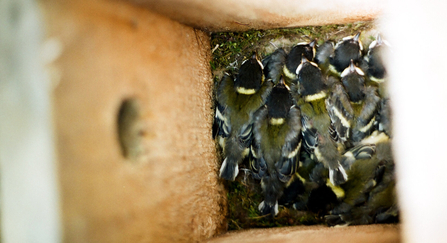
Great tit chicks in a nest box (c) Zsuzsanna Bird
Birds don’t really care what the box looks like – they just see a hole!
But the important thing to remember when choosing a box are that deeper ones are safer from predators, and to avoid any that have a perch under the hole, which just makes life easy for squirrels and woodpeckers trying to rob the nest.
If you have an active population of potential nest robbers you could invest in a woodcrete box (a mix of concrete and wood), or put a metal plate of the appropriate size over the entrance hole.
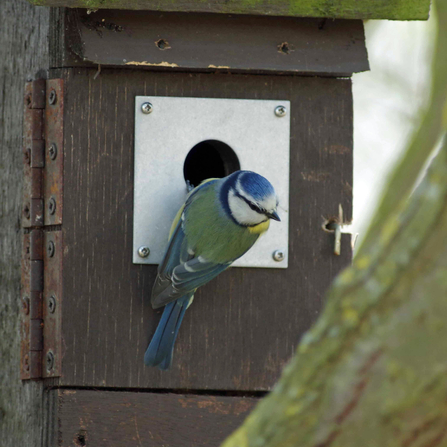
(c) Gillian Day
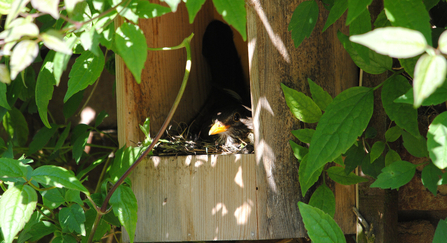
Blackbird in a nest box (c) Amy Lewis
Open boxes are less easy to protect, but I’ve had success with a home-made ‘cage’ of wire mesh round the whole box, about ten centimetres away from the box, which did a splendid job of keeping a very determined jay from a family of spotted flycatchers.
Positioning your box is important too. Homes for tits and sparrows need to be 2-4m off the ground, fixed to a tree or building. Sparrows will happily use boxes fixed under the eaves of the house – historically one of their preferred nest sites. Robins and wrens like to be lower down, below 2m and hidden in vegetation.
Unless the box is well shaded it should face between north and east, and should be tilted slightly forward to avoid rain blowing in.
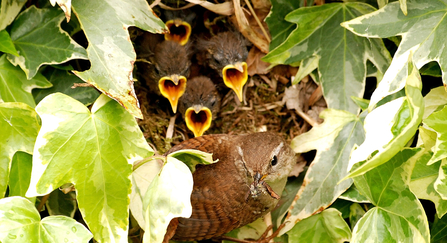
(c) Bob Coyle
Don’t be down-hearted if you don’t get lodgers in the first year – it may take a while for the birds to get used to a new box being there. If it still isn’t used after two or three years, think about repositioning it.
If you have several boxes in the garden you may find only one is used – robins in particular are territorial, and most gardens are too small to accommodate more than one pair. And if there are plentiful natural sites nearby your bird boxes (like mine) may be spurned altogether. Don’t take it as an insult – just congratulate yourself on having such a good habitat!
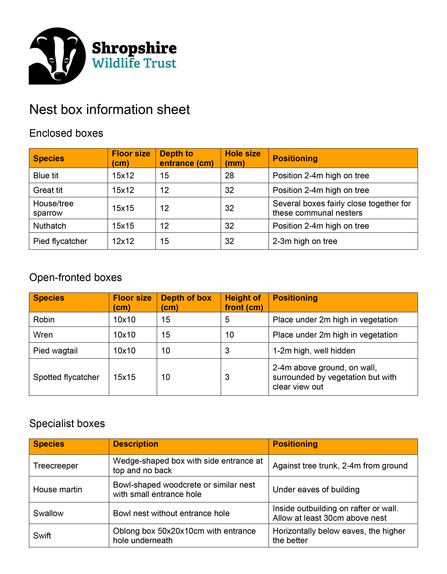
If you would like to find out more about what type of nest box, individual species prefer, including how it should be positioned, download our information sheet:
Browse our range of bird boxes online and order with us for collection from our shop in Shrewsbury.
Proceeds help us continue our work to protect wildlife in Shropshire.
Plus, if you are a member you receive 10% discount!